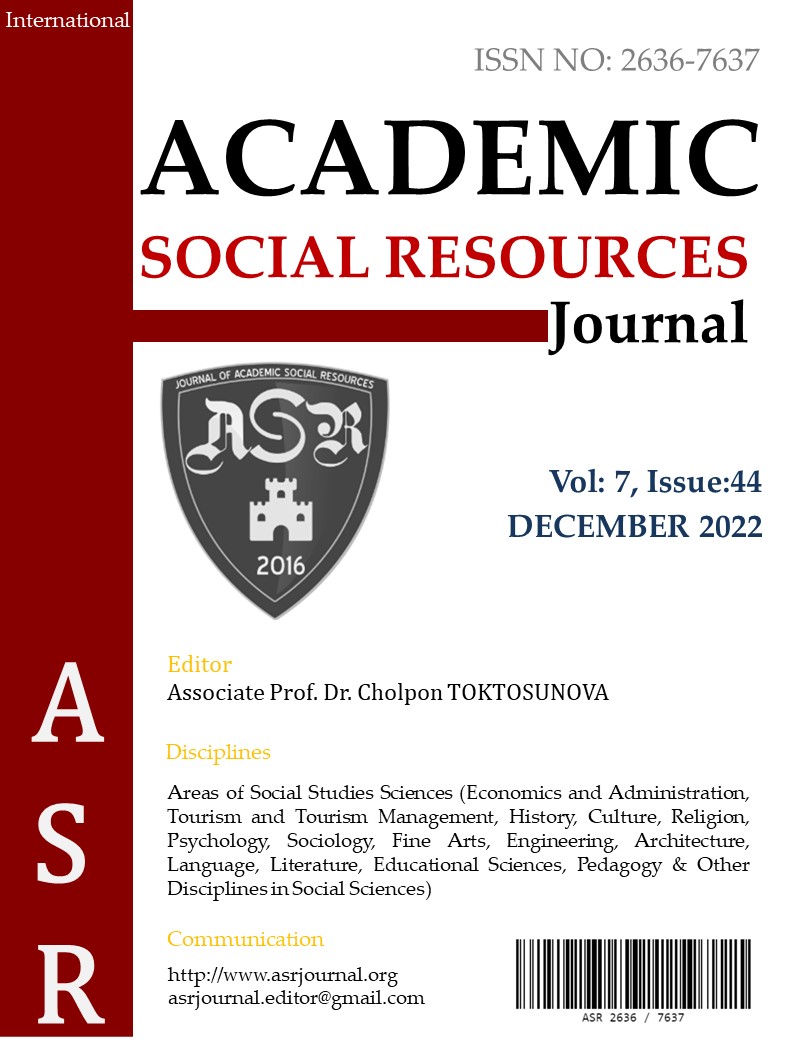Author :
Abstract
Bu çalışmada, konservatuvarlarda öğrenim gören Türk halk oyunları öğrencilerinin egzersiz bağımlılık düzeylerinin incelenmesi amaçlanmıştır.
Araştırmanın evrenini Türkiye genelinde 8 Konservatuvarda öğrenim gören 605 Türk Halk Oyunları öğrencisi, örneklemini ise, bu evren içinden gönüllü olarak katılan 139 öğrenci oluşturmuştur.
Veri toplama işlemi internet üzerinde bulunan arama motoru platformunun form uygulaması bölümünden gerçekleştirilmiştir. Araştırmaya katılan gönüllülerden araştırmacı tarafından hazırlanan kişisel bilgi formu ile literatürde bulunan Egzersiz Bağımlılığı Ölçeğini doldurmaları istenmiştir.
Bu bilgiler doğrultusunda parametrik testler uygulanmasına, karar verilmiştir. Çalışmaya katılanların ölçeklerden aldığı puanlar min, max ve standart sapma X±Sd olarak sunulmuştur. İkili karşılaştırmalarda bağımsız gruplarda T testi ve ikiden fazla grupların karşılaştırılmasında tek yönlü varyans analizi ANOVA testi uygulanmıştır. Gruplar arasında farklılıkların ortaya konulmasında LSD testi uygulanmıştır. Anlamlılık düzeyi p<,05 olarak kabul edilmiştir.
Sonuç olarak, konservatuvarlarda öğrenim gören Türk halk oyunları öğrencilerinin egzersiz bağımlılık düzeylerinin Aşırı Odaklanma ve Duygu Değişimi alt boyutunda az riskli gurupta, Bireysel-Sosyal İhtiyaçların Ertelenmesi ve Çatışma ile Tolerans Gelişimi ve Tutku alt boyutunda normal gurupta iken, ölçek toplam puanının risk gurubunda olduğu, cinsiyet, yetiştiği yer, aile aylık gelir değişkenine göre farklılık göstermezken, yaş değişkenine göre Bireysel-Sosyal İhtiyaçların Ertelenmesi ve Çatışma alt boyutunda farklılaştığı tespit edilmiştir. Bu durumun, sporcu yaşı arttıkça egzersiz bağımlılığının da artmasından kaynaklandığı düşünülmektedir.
Keywords
Abstract
In this study, it was aimed to examine the exercise addiction levels of Turkish folk-dance students studying in conservatories.
The population of the research consisted of 605 Turkish Folk Dance students studying in 8 Conservatories across Turkey, and the sample consisted of 139 students who voluntarily participated in this universe.
The data collection process was carried out from the form application section of the search engine platform on the internet. Volunteers participating in the study were asked to fill in the Personal Information Form prepared by the researcher and the Exercise Addiction Scale found in the literature.
In line with this information, it was decided to apply parametric tests. The scores of the participants from the scales were presented as min, max and standard deviation X±Sd. T test was used in independent groups in pairwise comparisons and one-way analysis of variance ANOVA test was used in comparison of more than two groups. LSD test was used to reveal the differences between the groups. Significance level was accepted as p<.05.
As a result, the exercise addiction levels of Turkish folk dance students studying in conservatories were in the low-risk group in the Extreme Focus and Emotional Change sub-dimension; In the sub-dimension of Postponement of Individual-Social Needs and Conflict and Tolerance and Passion, while it was in the normal group, the total score of the scale was in the risk group; While it did not differ according to gender, place of growing up, family monthly income variable, it was determined that it differed in the sub-dimension of Postponing Individual-Social Needs and Conflict according to the age variable. It is thought that this is due to the increase in exercise addiction as the age of the athlete increases.





